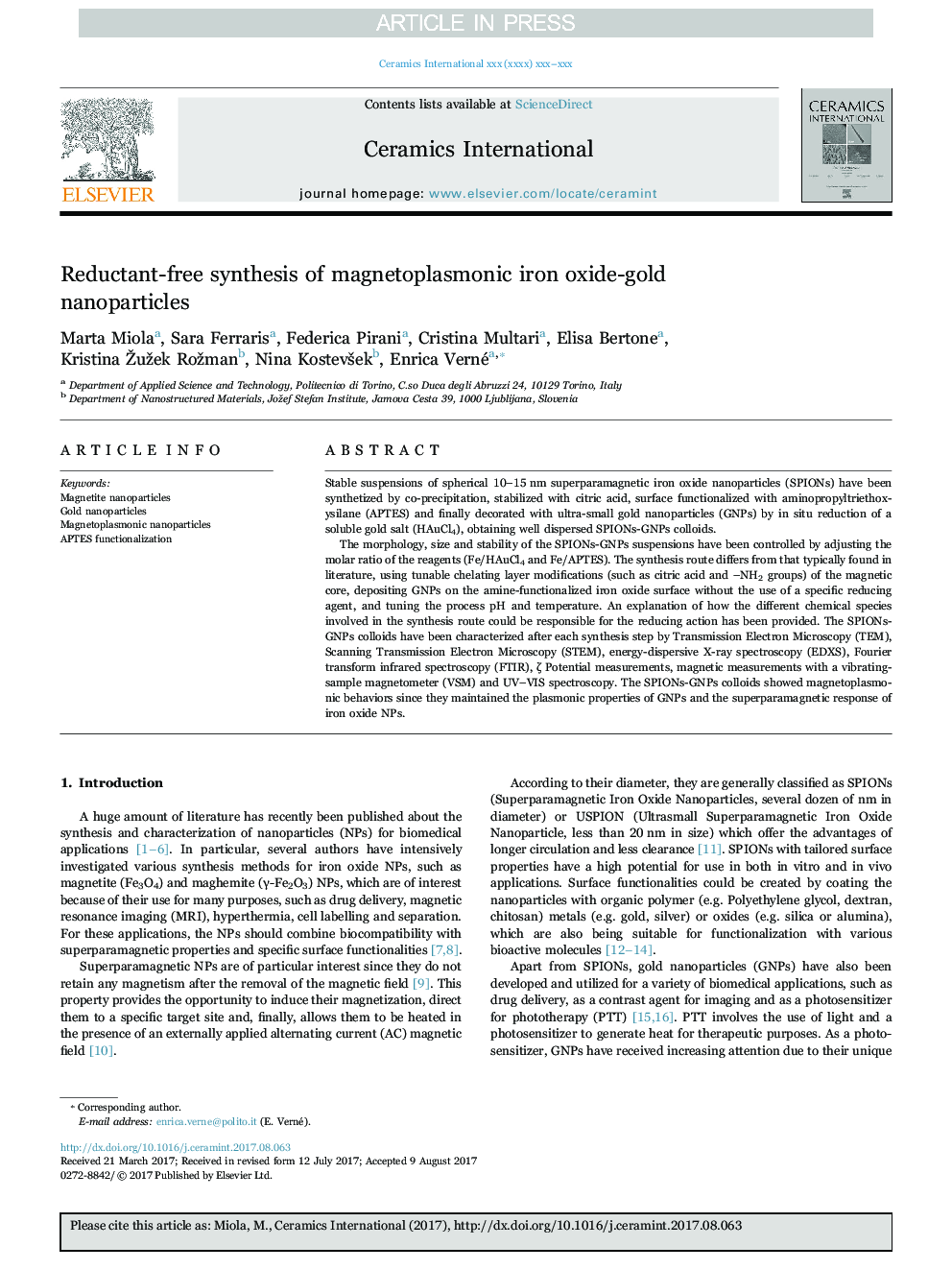| Article ID | Journal | Published Year | Pages | File Type |
|---|---|---|---|---|
| 5437423 | Ceramics International | 2017 | 8 Pages |
Abstract
The morphology, size and stability of the SPIONs-GNPs suspensions have been controlled by adjusting the molar ratio of the reagents (Fe/HAuCl4 and Fe/APTES). The synthesis route differs from that typically found in literature, using tunable chelating layer modifications (such as citric acid and -NH2 groups) of the magnetic core, depositing GNPs on the amine-functionalized iron oxide surface without the use of a specific reducing agent, and tuning the process pH and temperature. An explanation of how the different chemical species involved in the synthesis route could be responsible for the reducing action has been provided. The SPIONs-GNPs colloids have been characterized after each synthesis step by Transmission Electron Microscopy (TEM), Scanning Transmission Electron Microscopy (STEM), energy-dispersive X-ray spectroscopy (EDXS), Fourier transform infrared spectroscopy (FTIR), ζ Potential measurements, magnetic measurements with a vibrating-sample magnetometer (VSM) and UV-VIS spectroscopy. The SPIONs-GNPs colloids showed magnetoplasmonic behaviors since they maintained the plasmonic properties of GNPs and the superparamagnetic response of iron oxide NPs.
Related Topics
Physical Sciences and Engineering
Materials Science
Ceramics and Composites
Authors
Marta Miola, Sara Ferraris, Federica Pirani, Cristina Multari, Elisa Bertone, Kristina Žužek Rožman, Nina KostevÅ¡ek, Enrica Verné,
